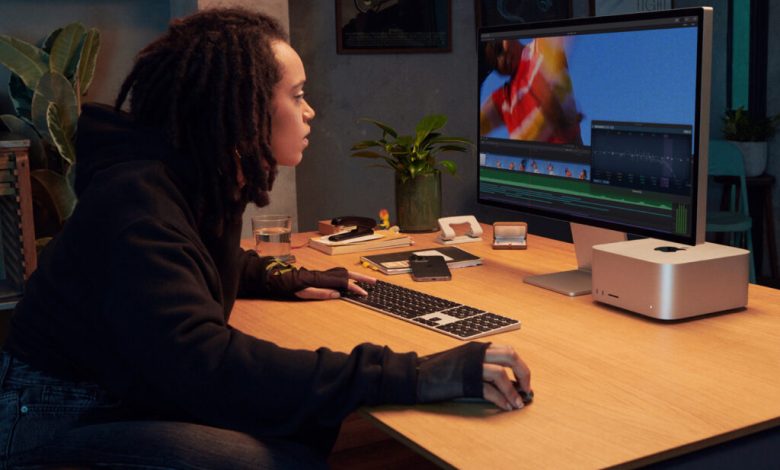
During the conference on March 8, Apple did not spare itself with regard to announcements, and the Apple brand continued, going from the iPhone SE, the third of the name, to the iPad Air with a chip M1, before the presentation of the evening, the M1 Ultra processor and the Mac Studio, brand new product released from Cupertino.
But in addition to this overpowered computer that everyone was attracted to, Apple also presented a monitor during its “Peek Performance” keynote. A screen that will have succeeded in seducing everyone, in particular thanks to its 5k image and a high quality sound system.
Today the only flaw that comes up with regard to the Studio Display is ultimately the quality of its webcam. Indeed, the device is not as efficient as expected on this point, and it’s a shame especially when you know how important videoconferencing has become in our lives over the past two years.
An immense memory, which raises questions
But in addition to these features that have already been studied at your fingertips, the Apple screen still had a few surprises in store. Starting with his memory. Indeed, without anyone really understanding why, Apple decided to allocate 64 GB of storage for the Studio Display.
It was the independent developer known as “Khaos Tian” who discovered this, and who shared this finding on Twitter. The information quickly went around the social network, which intrigues everyone. Especially when you know that these 64 GB of free space are currently not used.
Only 2 GB are occupied by the internal software of the screen, and if we suspect that we need to leave a little room for future updates, 16 GB could have been more than enough (even 8 to be honest), no one therefore understands why Apple put 64 GB of storage in this screen.
A simple saving made by Apple?
Faced with this unknown, many people go there with their theories. Some are betting on savings made by Apple on manufacturing costs. Indeed, in order to run the various software present in the monitor, the latter is entitled to an A13 Bionic chip, the same which runs in the iPhone 11. In its least greedy configuration, the chip is therefore equipped with 64 GB of memory, which could explain Apple’s choice of monitor.
The Cupertino company would not have wanted to incur new costs by changing its operating model, and factories continue to produce the same chip, whether for the iPhone 11 or the Studio Display.

